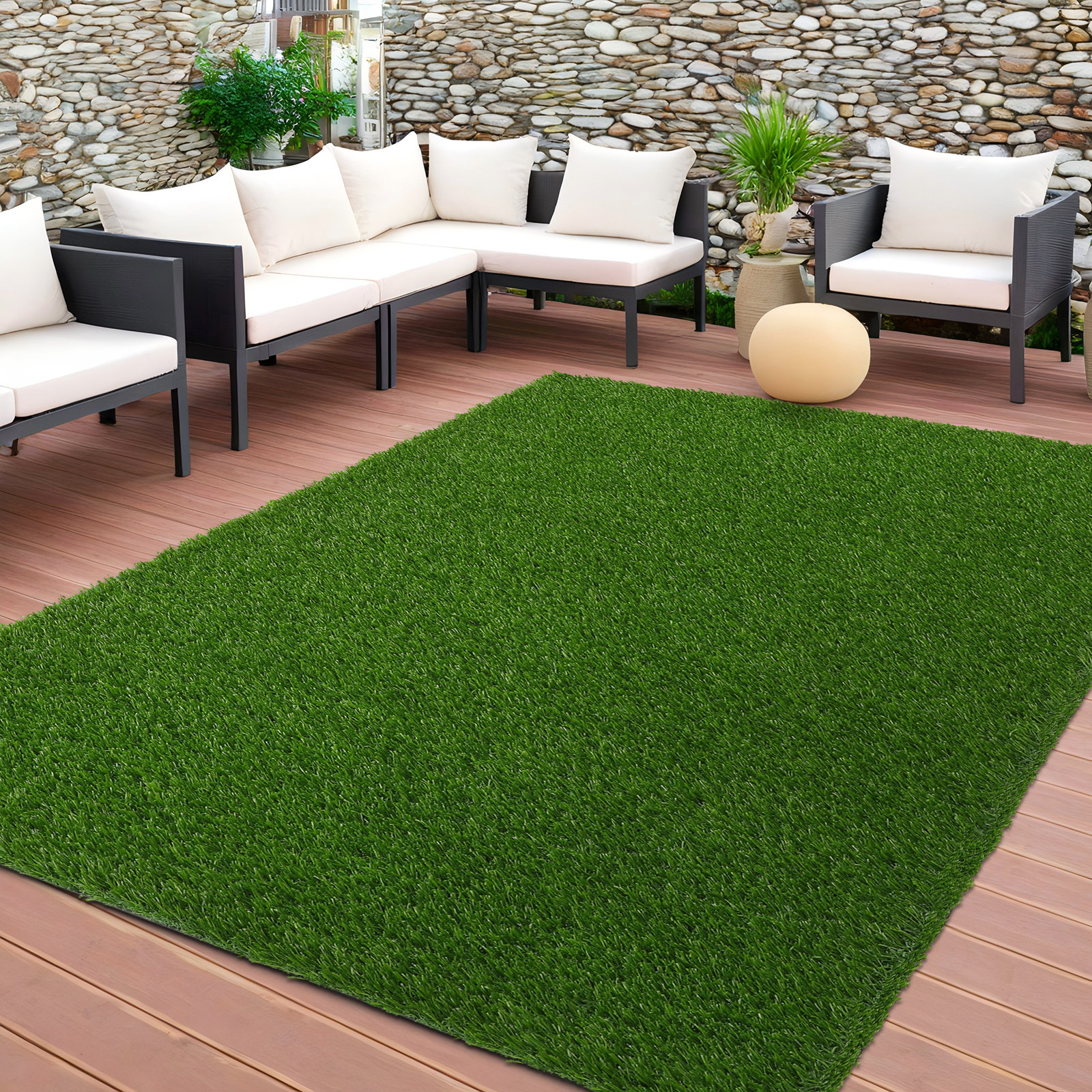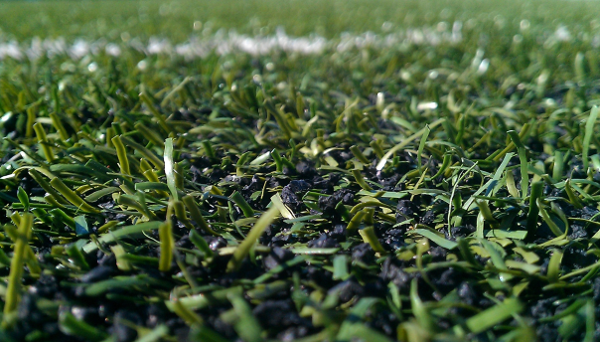Long-Lasting Arizona Artificial Turf for Home and Business Applications
Long-Lasting Arizona Artificial Turf for Home and Business Applications
Blog Article
Explore the Environmental Conveniences of Opting for Synthetic Grass Solutions
The fostering of artificial grass solutions presents a compelling chance to attend to pressing environmental challenges. By substantially decreasing water use and decreasing the application of harmful chemicals, these alternatives not just promote sustainable landscape design however additionally safeguard local communities. Moreover, the lower carbon footprint associated with lowered upkeep tasks adds to a much more lasting approach to land management. The effects of these advantages extend past mere preservation efforts, elevating inquiries about their lasting impact on environment preservation and total eco-friendly equilibrium. Exploring these measurements exposes an intricate interplay worth considering.
Water Conservation Conveniences
One of the most considerable advantages of artificial grass is its capability to save water. In contrast, fabricated grass does not require watering, substantially decreasing the general need for water resources.
By getting rid of the need for routine watering, fabricated grass contributes to sustainable landscape techniques and assists mitigate the environmental influence of excessive water consumption. The preservation of water expands to the reduction of drainage, which can lead to soil erosion and waterway contamination.
Furthermore, the installation of synthetic grass permits districts and house owners to assign water sources extra efficiently, focusing on necessary uses such as drinking water and agriculture. The shift in the direction of synthetic grass not only promotes liable water use yet also straightens with wider environmental objectives targeted at protecting natural resources.
As communities increasingly prioritize sustainability, the water preservation benefits of fabricated lawn offer a compelling situation for its adoption in industrial and household landscape design jobs.
Minimized Chemical Usage
The transition to synthetic grass significantly reduces the reliance on chemical treatments generally utilized in all-natural grass upkeep. Standard turf management usually involves the application of fertilizers, chemicals, and herbicides to promote development and control bugs. These chemicals can posture threats to human health and wellness, local wild animals, and the setting, adding to dirt and water contamination.
In comparison, artificial grass eliminates the need for these dangerous substances. By lessening the launch of artificial substances right into the community, man-made grass advertises much healthier dirt and water systems.
Moreover, the absence of chemical runoff associated with synthetic grass setups assists safeguard neighborhood rivers from air pollution, sustaining marine life and keeping biodiversity. Arizona artificial turf. As areas significantly focus on lasting methods, choosing synthetic grass offers a sensible service that lines up with environmental conservation objectives. Through this shift, residential or commercial property owners can enjoy rich environment-friendly areas without jeopardizing ecological health and wellness, leading the way for a more lasting future
Lower Carbon Footprint

Additionally, the installment of fabricated grass can cause substantial water preservation. All-natural lawns need substantial quantities of water for watering, which not only includes in the carbon impact associated with water removal and treatment yet additionally strains get more regional water resources. In comparison, synthetic grass needs minimal upkeep, calling for no watering, thereby dramatically lowering water usage and its connected power expenses.
Furthermore, the longevity of artificial turf adds to its decreased carbon impact. With a life expectancy of approximately 15 years or even more, the requirement for regular replacements is reduced, causing much less waste and reduced power intake in production and taking care of traditional turf alternatives. On the whole, artificial turf presents a lasting choice for environmentally aware landscape design.
Environment Preservation
Environment preservation is an important consideration in the dispute over landscape design options, especially when comparing synthetic lawn to natural turf. Natural yard lawns frequently require extensive upkeep, including using fertilizers, pesticides, and herbicides, which can negatively impact local communities. These chemicals can leach into the dirt and waterways, harming native flora and animals and interfering with regional environments.
In comparison, synthetic lawn provides a chance to decrease home the eco-friendly footprint of landscape design. By choosing artificial turf, home owners can lessen the disruption of all-natural habitats related to standard lawn care techniques. Synthetic grass removes the need for unsafe chemicals, thereby securing neighboring wildlife and preserving the honesty of surrounding ecosystems. Furthermore, the installment of synthetic turf can result in the conversion of previous yard locations right into even more biodiverse landscapes, such as pollinator yards or native plant areas, which can sustain regional wildlife.
Eventually, the shift to fabricated lawn not only preserves water and lowers upkeep initiatives yet likewise promotes a much more harmonious partnership between human activities and the native environment, advertising environment preservation while doing so.
Long-Term Sustainability
Lasting sustainability is an essential consider examining the benefits of synthetic grass over standard turf lawns. One of one of the most considerable advantages of synthetic grass is its sturdiness; it can last approximately 15-20 years with very little maintenance, whereas all-natural lawn requires regular reseeding and replacement. This longevity lowers the requirement for continuous sources, such as water, plant foods, and chemicals, which are crucial for maintaining a healthy grass yard.
Additionally, synthetic grass contributes to a decrease in carbon emissions associated with yard care tools. Conventional grass typically need gas-powered mowers, trimmers, and blowers, every one of which add to air contamination. Arizona turf. On the other hand, synthetic grass eliminates the demand for such tools, advertising a cleaner environment
Furthermore, the production of man-made lawn significantly utilizes recycled materials, boosting its sustainability account. As makers take on green practices, the ecological impact of synthetic grass remains to lessen.

Conclusion
The adoption of synthetic turf services provides considerable environmental advantages, consisting of considerable water preservation, minimized dependence on dangerous chemicals, and a lower carbon footprint. Synthetic grass aids in protecting natural environments by decreasing land disruption and promoting long-term sustainability through the usage of long lasting materials. Collectively, these factors emphasize the capacity of synthetic grass to contribute favorably to environmental health and wellness and provide a practical choice to conventional landscaping practices in an increasingly resource-conscious globe.
In contrast, artificial turf does not need watering, considerably minimizing the total demand for water sources. By minimizing the release of artificial compounds right into the ecological community, artificial grass promotes much healthier dirt and water systems.
Additionally, the installation of man-made turf can result in significant water conservation. In comparison, artificial grass needs very little maintenance, calling for no watering, thus considerably lowering water usage and its associated energy prices.

Report this page